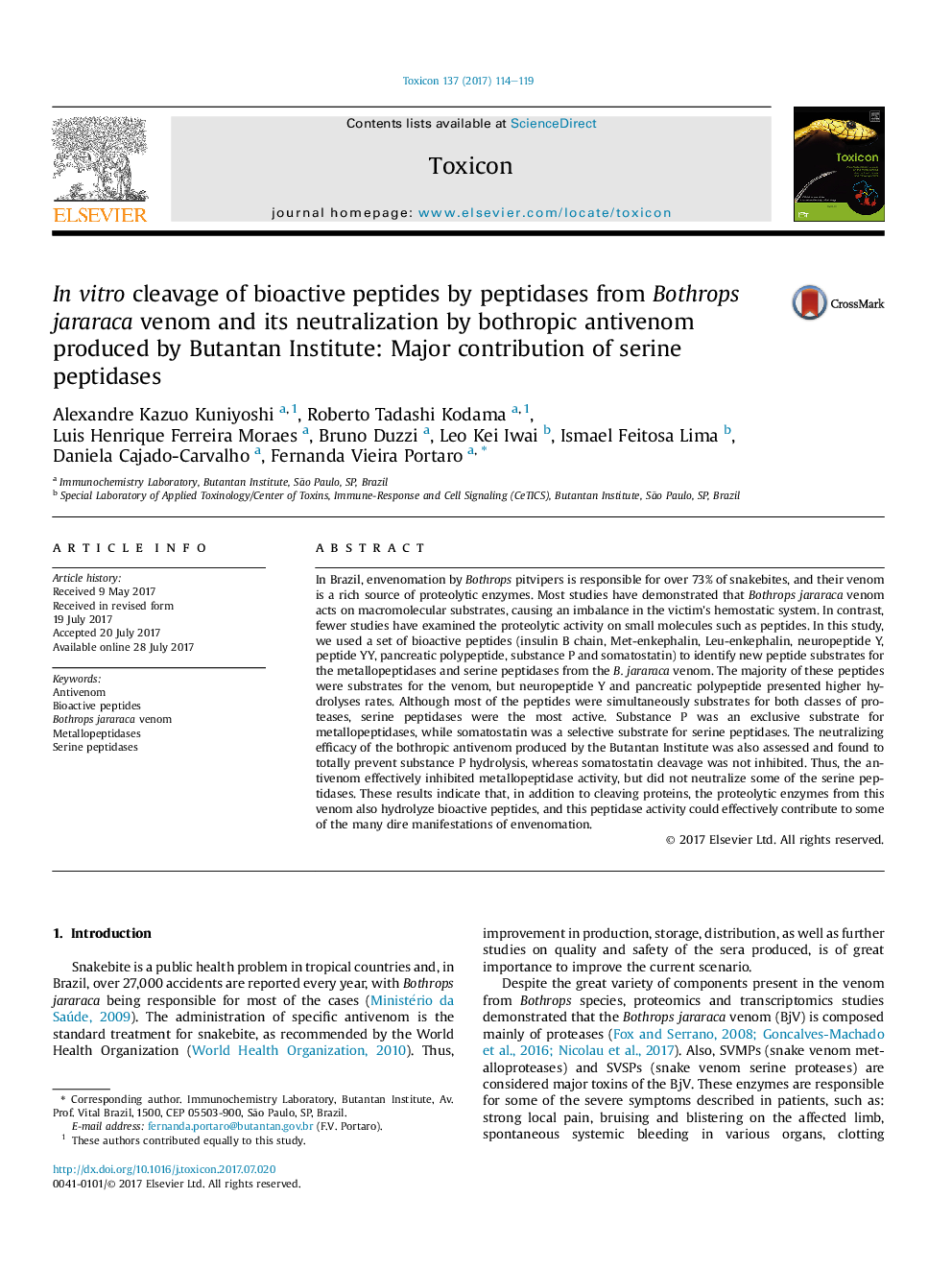| کد مقاله | کد نشریه | سال انتشار | مقاله انگلیسی | نسخه تمام متن |
|---|---|---|---|---|
| 5519286 | 1544099 | 2017 | 6 صفحه PDF | دانلود رایگان |

- Peptidases from Bothrops jararaca venom hydrolyzed biologically active peptides.
- Serine- and metallopeptidases were responsible for these activities.
- Serine peptidases were the most active ones on these peptide cleavages.
- Peptides from the neuropeptide Y family were the most susceptible to cleavages.
- The bothropic antivenom was unable to block all the described serine peptidases' activities.
In Brazil, envenomation by Bothrops pitvipers is responsible for over 73% of snakebites, and their venom is a rich source of proteolytic enzymes. Most studies have demonstrated that Bothrops jararaca venom acts on macromolecular substrates, causing an imbalance in the victim's hemostatic system. In contrast, fewer studies have examined the proteolytic activity on small molecules such as peptides. In this study, we used a set of bioactive peptides (insulin B chain, Met-enkephalin, Leu-enkephalin, neuropeptide Y, peptide YY, pancreatic polypeptide, substance P and somatostatin) to identify new peptide substrates for the metallopeptidases and serine peptidases from the B. jararaca venom. The majority of these peptides were substrates for the venom, but neuropeptide Y and pancreatic polypeptide presented higher hydrolyses rates. Although most of the peptides were simultaneously substrates for both classes of proteases, serine peptidases were the most active. Substance P was an exclusive substrate for metallopeptidases, while somatostatin was a selective substrate for serine peptidases. The neutralizing efficacy of the bothropic antivenom produced by the Butantan Institute was also assessed and found to totally prevent substance P hydrolysis, whereas somatostatin cleavage was not inhibited. Thus, the antivenom effectively inhibited metallopeptidase activity, but did not neutralize some of the serine peptidases. These results indicate that, in addition to cleaving proteins, the proteolytic enzymes from this venom also hydrolyze bioactive peptides, and this peptidase activity could effectively contribute to some of the many dire manifestations of envenomation.
155
Journal: Toxicon - Volume 137, October 2017, Pages 114-119